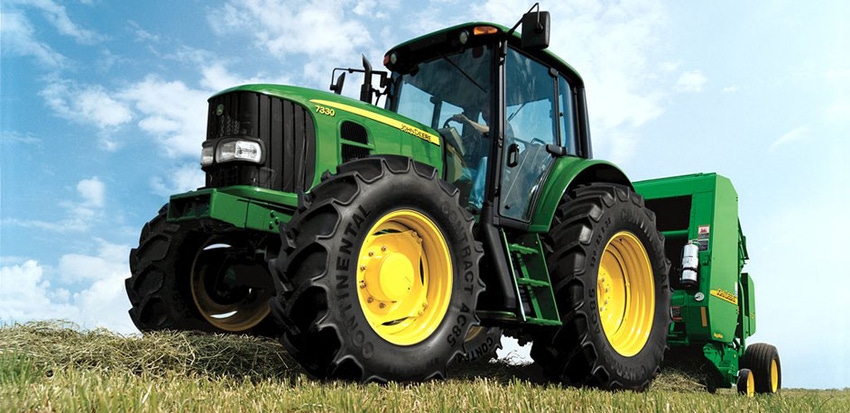November 21, 2011

Electric farm vehicles are gaining renewed interest in the agricultural industry, according to a recent article in Resource magazine, the official publication of the American Society of Agricultural and Biological Engineers.
Senior standards engineer Marlin Onnen with the John Deere Product Engineering Center says we can expect to see more diesel-electric systems in farm tractors, sprayers and implements. In his article “Coming Soon: Tractor Electrification,” Onnen defines “electrified platforms” as vehicles with onboard system voltages in the range of 50 to 1000 VAC or 75 to 1500 VDC. Typically, a flywheel-mounted generator is used to produce electric current as the prime mover, displacing traditional hydraulic pumps and gear sets.
Onnen cites four state-of-the art electrified platforms being used today: the John Deere 7030 Series E-Premium tractors, the AGCO RoGator E sprayer, the Belarus Tractor International 3023 tractor, and the Rauch EDR fertilizer spreader. Onnen says these vehicles provide a glimps into the potential future of this technology.
Now comes the so-what. By taking over the functions of traditional mechanical and hydraulic linkages, pumps and gear sets, electrified platforms can allow for more control over tractor components such as the coolant pump and fan, at speeds that are independent of the engine speed.
Another benefit, Onnan says, is they can provide for a fuel savings of up to 13 percent, as shown with the John Deere 7530 Premium tractor when pulling a power harrow and 9.3 percent when pulling a trailer. In a DLG-PowerMix test, the 7530 E-Premium saved up to 5 percent compared to conventional tractors, including a John Deere 7530 Premium, Deutz-Fahr Agrotron M 640, Fendt 820 Vario TMS, Case IH Puma 180, and New Holland T7040.
In the case of the Rauch EDR fertilizer spreader, the implement working speed is not dependent on the tractor driveline speed. This can optimize fertilizer delivery rate and cut fuel use because the engine can be operated at maximum efficiency. Electrification also can make fertilizer application more precise because the discs can be controlled independently. For example, at the edge of a field, one disc can be turned off to minimize product waste, Onnen says.
Finally, electrified platforms provide an alternate power source to PTO and SCV couplers, and they can even improve some agricultural processes. For example, the ability to transfer power electrically eliminates the presence of oil, significantly minimizing the risk of contamination for the product being handled, Onnen adds.
“Although it’s not a new idea, electrification is an emerging technology within the agricultural industry,” Onnen says. “Be sure to keep an eye on it.”
About the Author(s)
You May Also Like




